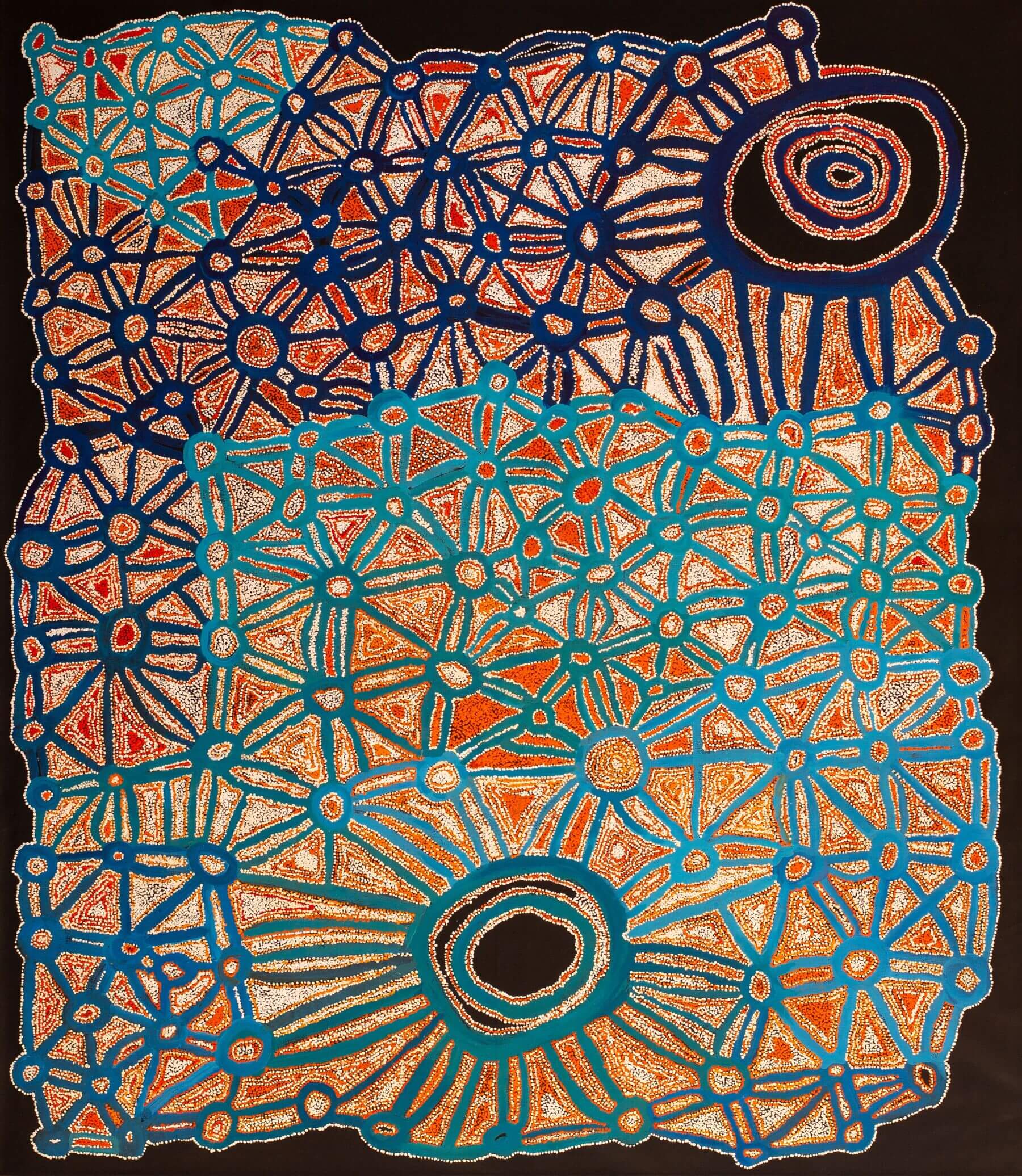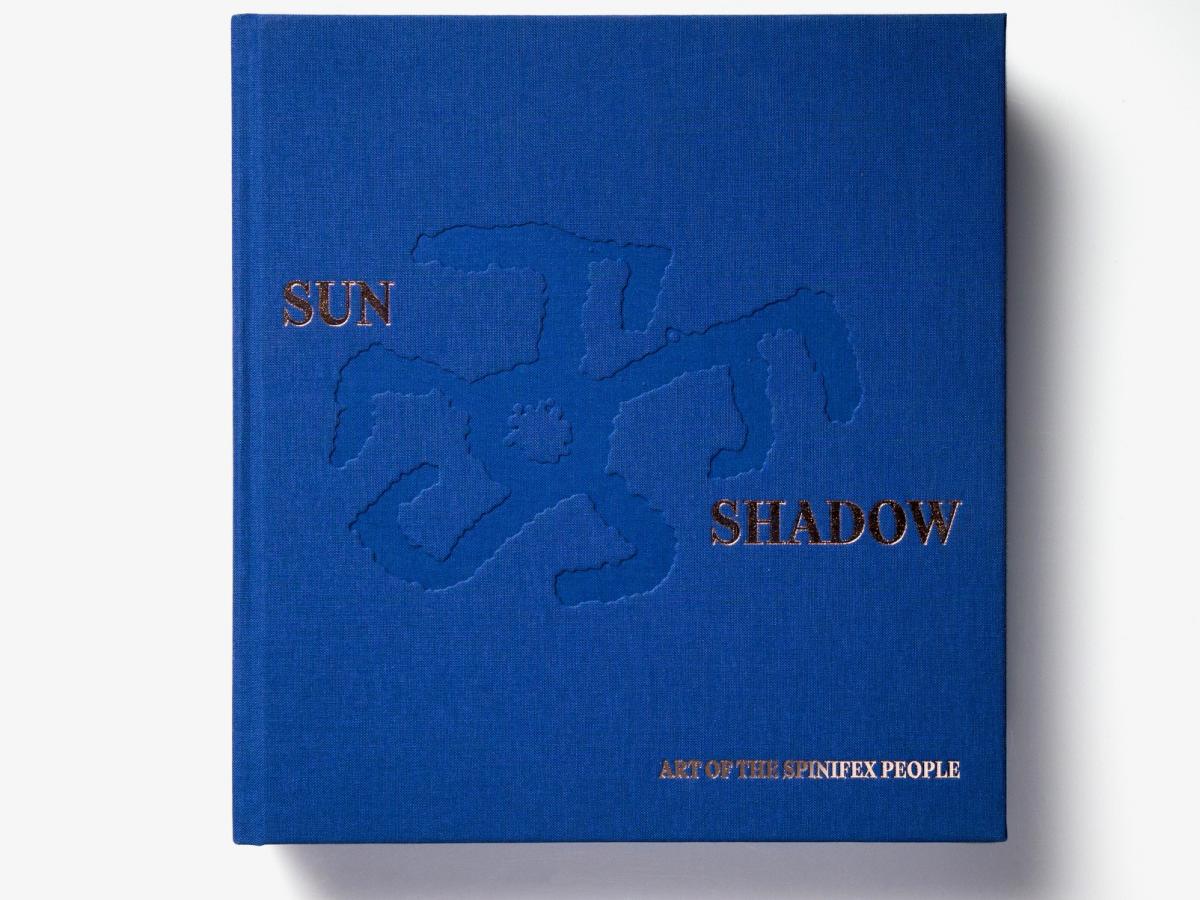Sun & Shadow: Art of the Spinifex People
Terri-ann White of Upswell Publishing is the publisher of Sun & Shadow: Art of the Spinifex People, edited by John Carty and Luke Scholes, produced in collaboration with Spinifex Arts. Terri-ann describes her role in the project and reflects on the elements contributing to the book's depth and quality. As she states, Spinifex Arts owns this project. The book represents a collaborative project designed to tell the story of the Spinifex people. It is an outstanding publication attracting international interest.
How did this project come about?
I'll start by describing the role of a publisher. It's to have ears to the ground, take risks, invest in ideas, good writing and original projects. So this book came to me because I had worked with one of the co-editors, John Carty, on three books in the past. We had an excellent shared understanding of what a book might be and what it might carry.
This book was already well and truly in the pipeline before I joined John and Luke Scholes (the other co-editor) and the people from Spinifex Arts. I met them in 2021 in Adelaide when Timo Hogan, one of the artists, had just won the significant Telstra Art Award. John brought me into a project he and Luke had been working on for some time. Both were well acquainted with Spinifex Arts and its artists and stories carried in this remarkable art movement.
The editors had brokered everything: inviting other writers with expertise to write about particular aspects of this story and making selections of this remarkable body of work by the Spinifex artists. So I'm not there at the start, and generally speaking, that's not where publishers are in an art book like this. I don't have expertise in art. I have expertise in backing good ideas.
What did you set out to achieve?
John and Luke, and Brian and Amanda from Spinifex Arts, wanted the best book we could make on this extraordinary art movement. Alongside that, they wanted to be able to tell this remarkable story of survival and revival and something that spans so much of what the 20th century threw up for us: colonialism and the devastating atomic tests by the British in 1952. Those tests profoundly affected the community who ran away from this terror, many of whom were not seen again until 1986. The other big 20th-century story is that of Native Title within Australia.
These two profound events come from outside the community of artists that influenced their need to develop as artists. The Spinifex people needed to claim the country they had left and returned to in 1986. This country was now occupied by others, and then had to prove their connection with the country. They matched artistic expression to prove this was their country, a remarkable story. This book is so precious in that it tells all of those stories and then shows us the work these artists have made both as individual artists and in collaborative paintings.
The book is a compelling read. The text and the images are rich and moving, making it an incredible document. It feels like so much more than just an art book. It is stunning storytelling that restores an essential part of our history.
What were the challenges?
There were many challenges in an almost 400-page full-colour book. It's interesting how we forget everything that might've been a challenge when we finally reach the end. One particular challenge was the selection of artworks because there was so much extraordinary material to choose from.
An individual philanthropist and lover of Spinifex art gave us remarkable support. He had a clear desire that the book be printed in Australia. Printing locally a book like this is a rarity these days because of costs. Offshore printing is taking over, sadly. This gentleman was keen that the book was printed in Australia and contributed generously to enable that. This financial support was a significant gesture and added another layer to the stories woven into this book.
How did the information-gathering process work?
John and Luke planned the information gathering alongside Spinifex Arts. They worked with those who work at, run, and create art in that community. It was an enormously collaborative project, and Spinifex Arts was involved in all decision making. That's made very clear in the opening and the text on the back of the book, "We are Spinifex people from the Great Victoria Desert and live in the Tjuntjuntjara community. This is our story and the history of our Spinifex Art project. The old people were born in this country, and painting helped get this country back."
In that sense, it's a very political book because it is by the community. Many art books about Aboriginal art have a gap between the intent and the audience and the information-gathering process. Everything the editors came up with for the final product had gone through the community's decision-making. I met the key people, and I trusted the editors. I knew they'd selected writers up to the job with profound knowledge of the artists, the community, and its history. Trust is the key in publishing as well.
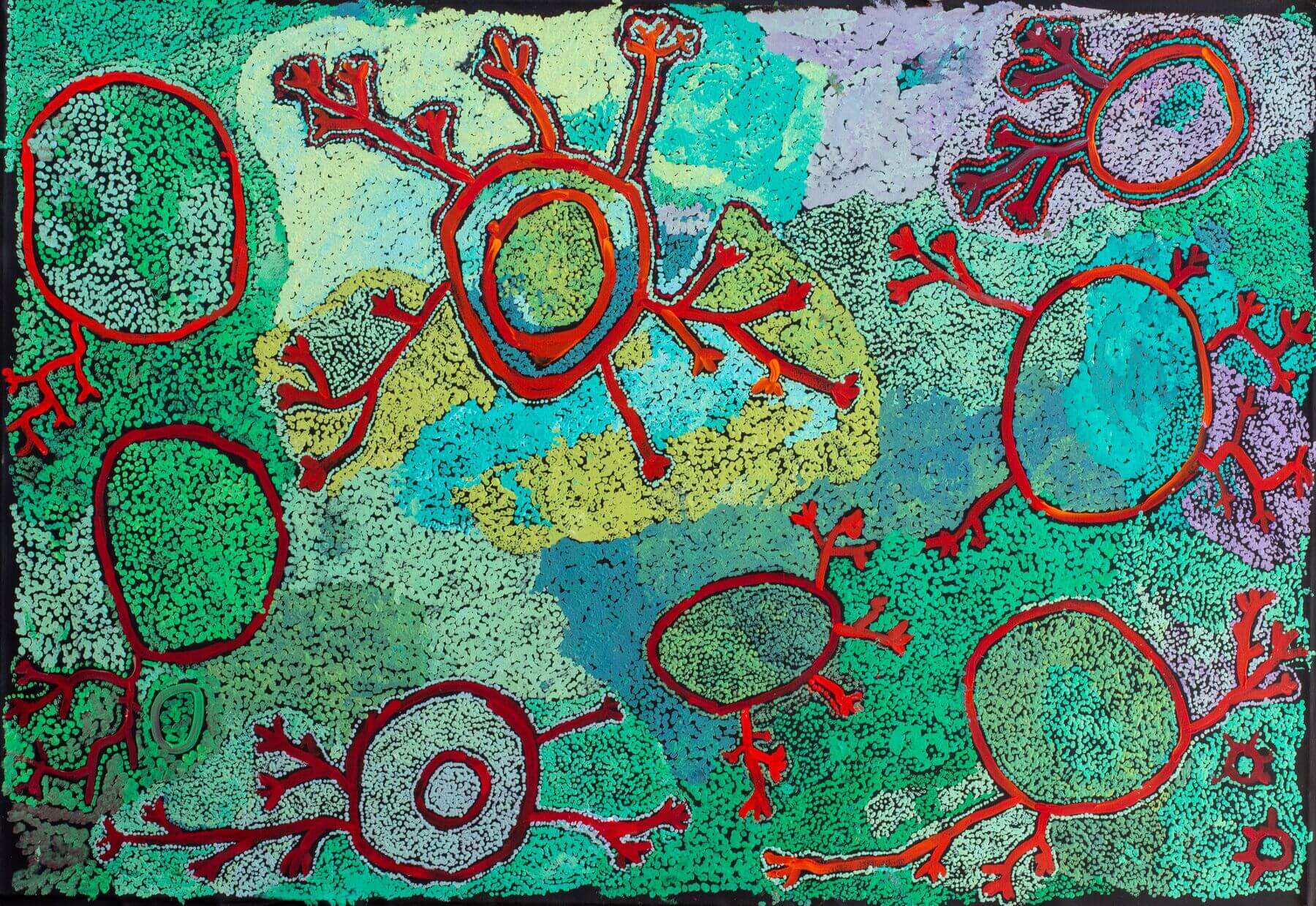
Can you describe the relationship between your role and the writers/information gatherers?
I'm the one who sits back and waits for the material to come in. That can be very anxiety provoking if you don't have a clear knowledge of the people involved and their capacity. If there isn't trust there, it's complicated. I had all of that trust just sitting there waiting to push the start button. When a manuscript came through, it came through in sections, but was impressive from the start.
There was an initial selection of artworks that stayed consistent through to the final product. Then it was a matter of finding who to recruit to design the book. That involved looking at different portfolios of book designers. I've worked with quite a few book designers in the past. The editors of this book had clear design ideas and aesthetic ideas. My role is to ensure that the designer still has autonomy when building some sample chapters and then working through the materials. The design was a very collaborative process.
What are you most proud of about this project?
The book's quality. I'm not alone in that because of the number of people who have purchased the book and sent feedback to me. These are people I don't know. They say this is one of the most exceptional books they have seen because the design enhances all artworks. There are so many of them in the book. There are also such beautiful portraits of artists and photographs of country. So yes, I'm most proud of its quality. We also produced a limited edition of this book, which is in a handmade box, and the handmade box is in this amazing blue with fabulous gold foiling. So you open this box, and it's a miraculous experience!
I'm also proud of the story coming out into the world: a story not well known. It's very readable. I'm getting positive feedback about how these different writers take us through the various aspects of this story of country, disaster, recovery, art and people.
I'm thrilled my friend Melissa Parke, incoming Executive Director in Geneva of ICAN, the International Campaign to Abolish Nuclear Weapons, will be sharing the book internationally. She's taking two boxes of the book with her when she starts in September: it is a perfect story for what that whole movement is about, the elimination of nuclear weapons.
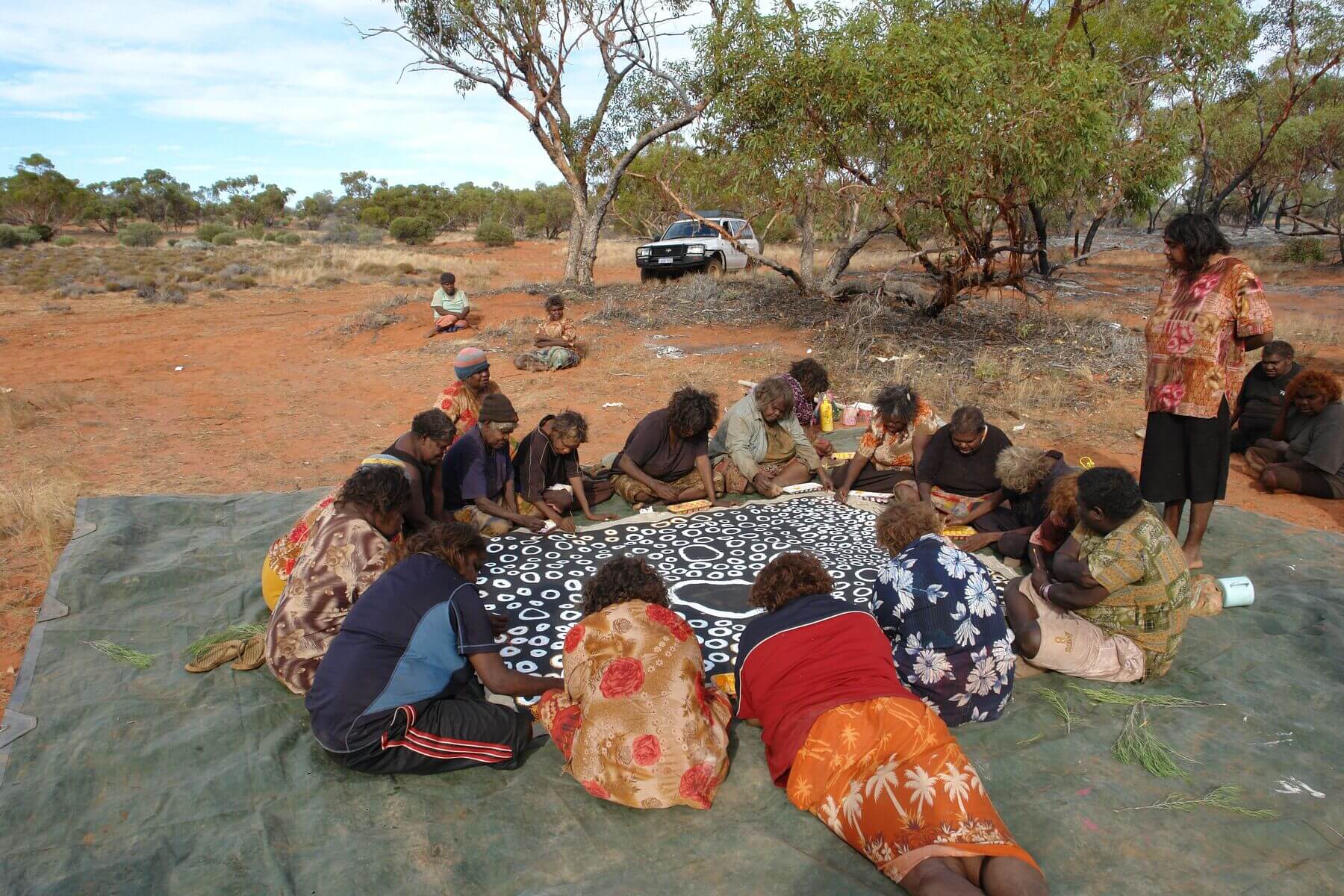
What does this book mean to the communities?
There has been a great deal of commemoration of the book on social media. When the book arrived in the community, they celebrated with a launch. You can see photos of the book in people's hands, and the pleasure, pride and joy of seeing their work in this completed volume was very moving.
Four of the artists came down to Perth for a launch that we had at WA Museum Boola Bardip in Northbridge. The Museum and the co-editors brought out the paintings that the WA Museum holds, and put them on easels, and the older men sang to them. It was a precious event. It was very clear from everyone who came down for the launch how impactful it had been for them to see the work and their story in a beautiful book. There was a great deal of signing of the books afterwards by these revered artists.
What aspect of the project did you enjoy most?
It was reading the first chapters that came in because I had already seen quite a lot of the artwork, but then there was this tangible work in progress. I like the whole lead-up and the work that happens before there's a finished product. As magnificent as the finished product is, seeing the writings come in was a big moment.
I felt it would be good even before anything came in because I’d met Brian and Amanda, and Timo Hogan in Adelaide. They showed me how valuable, important and highly anticipated this book was. Because in many ways, despite the artwork's brilliance, the artists' talent and the work's success across art markets, the Spinifex people have such an extraordinary story, and it's not as well known as it should be.
There are people alerted to the brilliance of the art, and there are people alerted to the drama of their history, but there are not enough people who know about these combined stories. There's a lot more to understand about this community, where they've come from, and where they're going. And I love that we have the Milpa project, the multimedia arts film, digital photography and animation at the end. They're also the young people coming through, continuing this creative tradition.
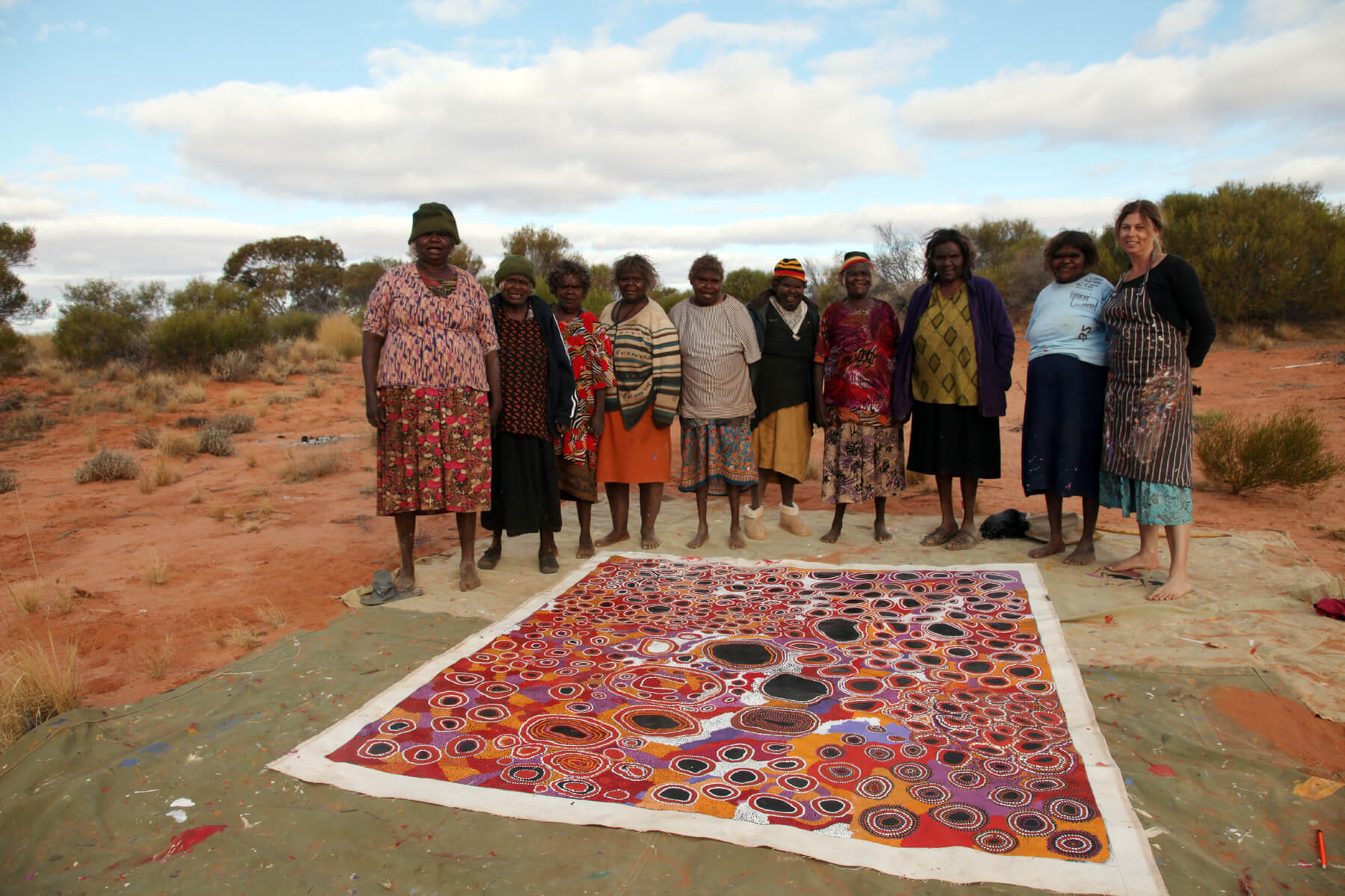
Can you talk to me about the legacy of this book?
This book is an extraordinary story of survival amidst 20th-century shenanigans. This will be the definitive book about Spinifex artists for a long time. This captures that story and does an excellent job of selecting artworks across time to illustrate it. The legacy is long-lasting, mainly because the project was so community generated. I'm getting orders from around the world, and that's because people are recognising this as both a beautiful and significant book.
Order Book:
Upswell Publishing: Sun & Shadow: Art of the Spinifex People
View Exhibition:
Sun and Shadow: Art of the Spinifex People
Read:
Walk Through: Spinifex Arts Project 20th Anniversary Exhibition at Japingka Gallery.
Symbols Used In Spinifex Women’s Collaborative Artwork
Working With The Spinifex Arts Project (2014)
Links:
Major Publication in Australian Art - The University of Adelaide
Art of the Spinifex People - ABC
Putikutu Ananyi: Bush Trip – Milpa Collective | Tjuntjuntjara WA - YouTube

